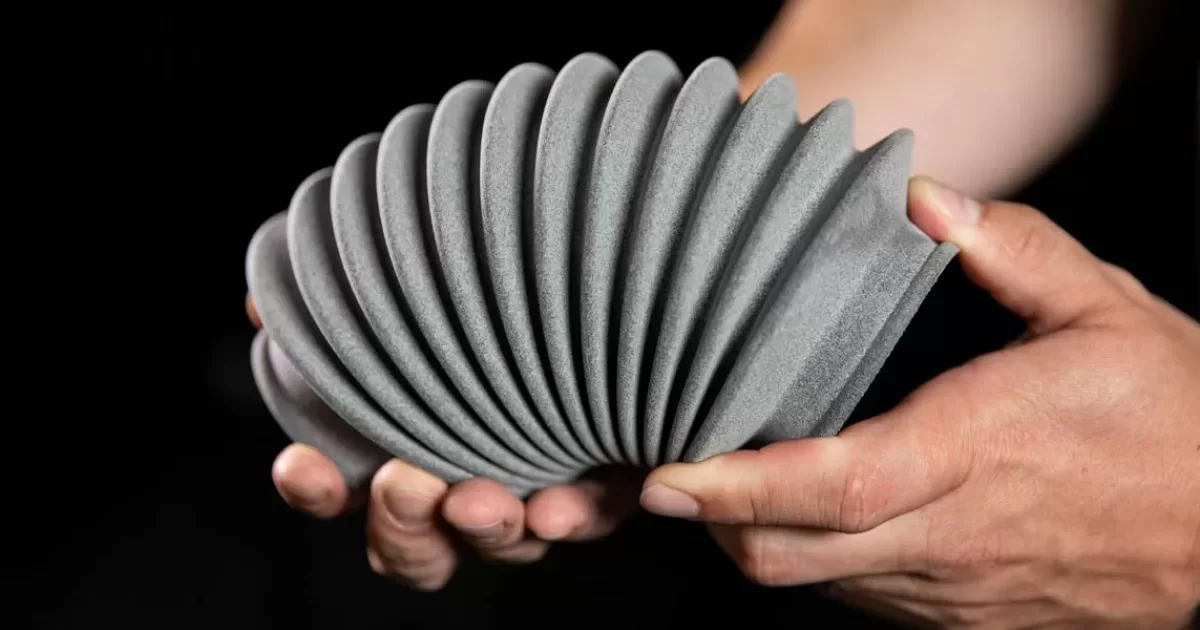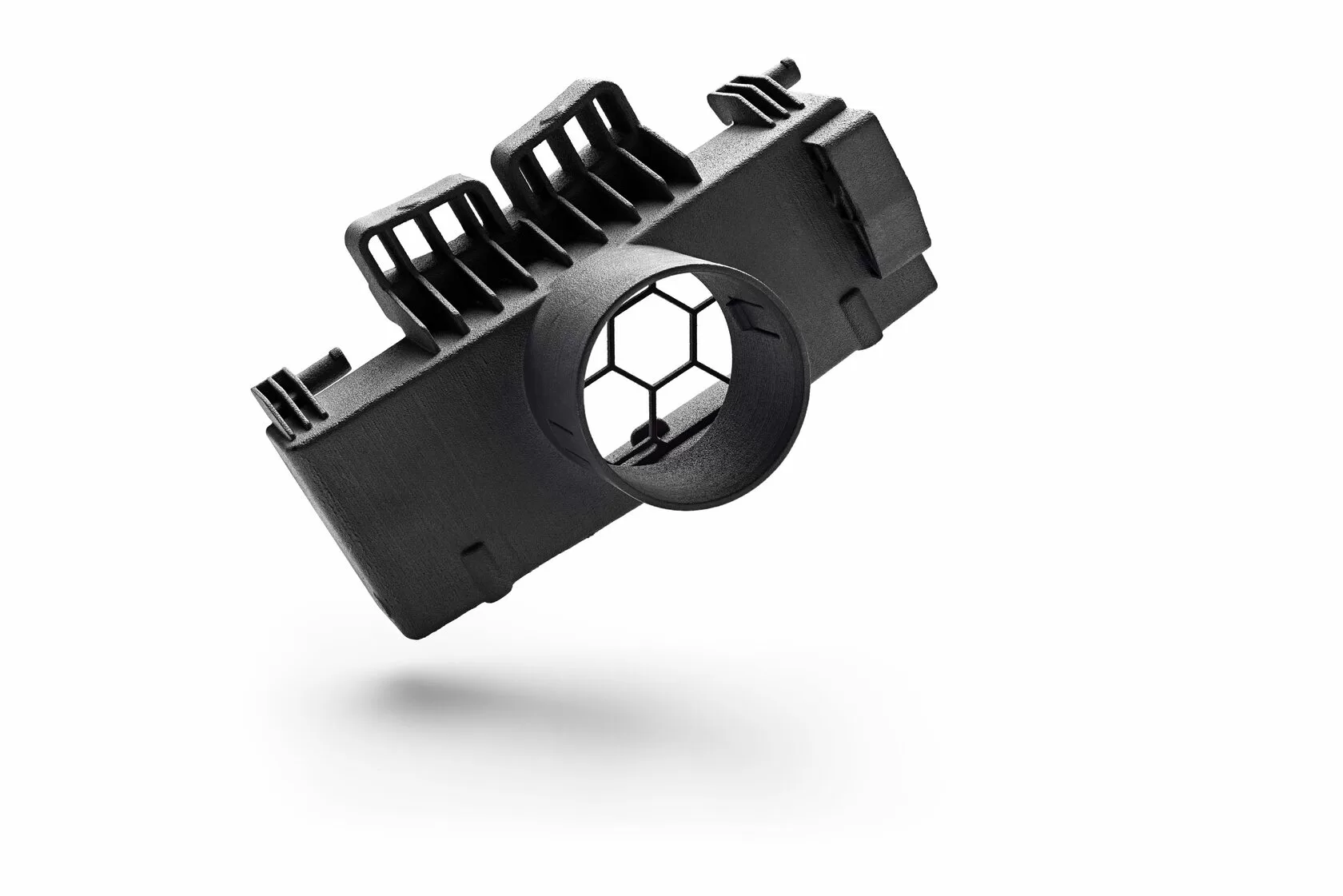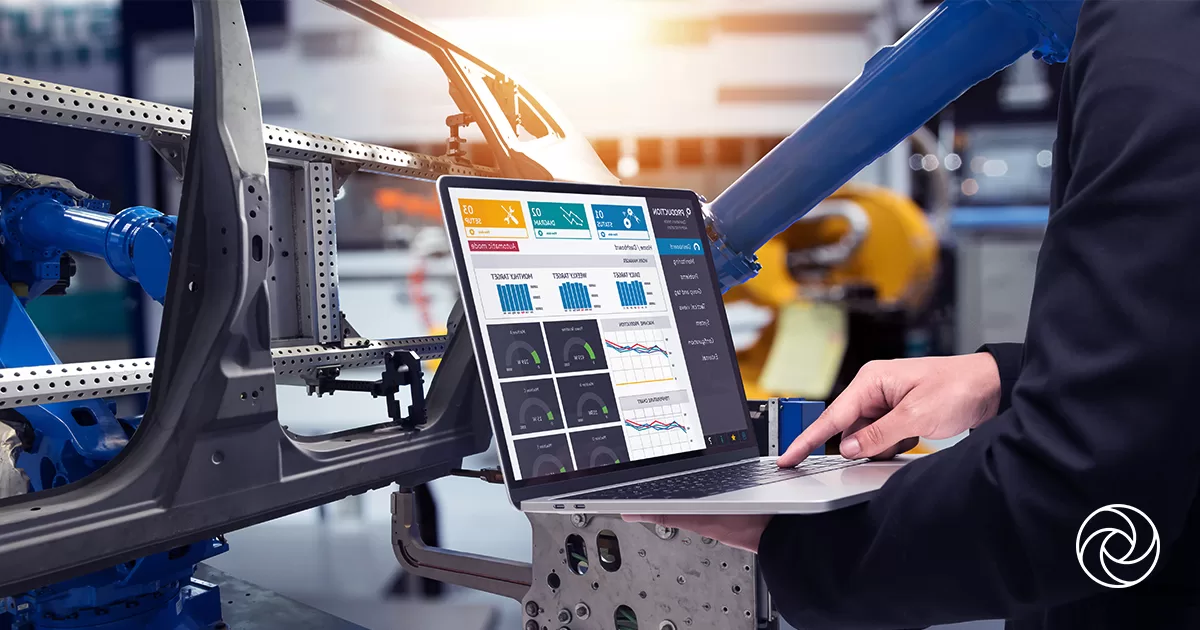The additive manufacturing industry has been around for longer than most people realise. Over the past four decades, there have been numerous significant advancements in 3D printing. Initially, engineers used stereolithography (SLA) technology in the 1980s for manufacturing prototypes, and soon after, in the early 1990s, fused deposition modelling (FDM) was introduced. Fast forward to 2016, and Multi Jet Fusion (MJF) was released, which once again revolutionised the additive manufacturing industry.
FDM is one of the earliest 3D printing methods, while MJF is one of the most recent. However, they both have the capability to produce precise components quickly. So, which one is the most appropriate for your upcoming project? Here are the factors to consider before reaching your ultimate decision.
What is MJF 3D Printing?
In 2016, HP used its knowledge in inkjet printing and precision mechanics to enter the 3D printing industry. MJF technology creates sturdy and precise components with intricate features and consistent mechanical qualities by building each layer of parts in a powder bed. This process results in high-quality surface finishes.
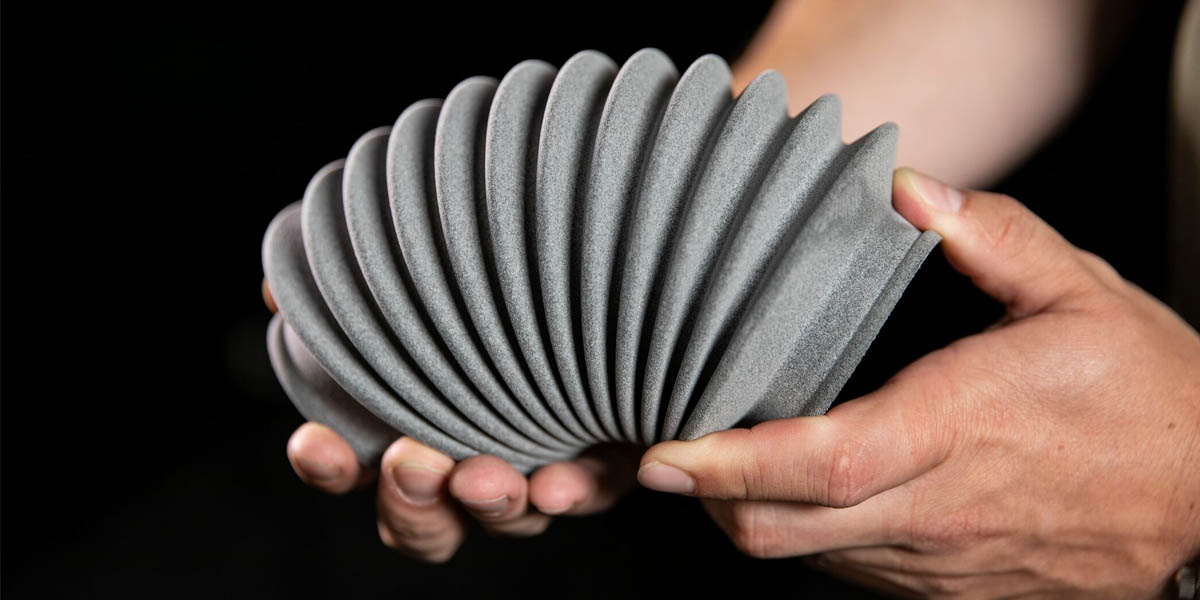
MJF is capable of creating fully-filled, operational, and intricate components that do not need support structures. This makes it ideal for producing sturdy prototypes or small-volume production runs. Common examples include jigs, fixtures, electronic casings, and mechanical assemblies.
How Does Multi Jet Fusion Work?
Firstly, an engineer places the movable build unit in the printer and the printer then deposits a layer of powder material, like polyamide 11 (PA 11), polyamide 12 (PA 12), or TPA. After that, the printing and fusing carriage moves across the build area, and the inkjet nozzles add fusing agents. After each layer is finished, the machine will add another layer of powder and the process will repeat. When everything is printed, the operator will remove the build box and separate the part from any excess powder, before using a bead, air or water blaster to clean up the remaining powder.
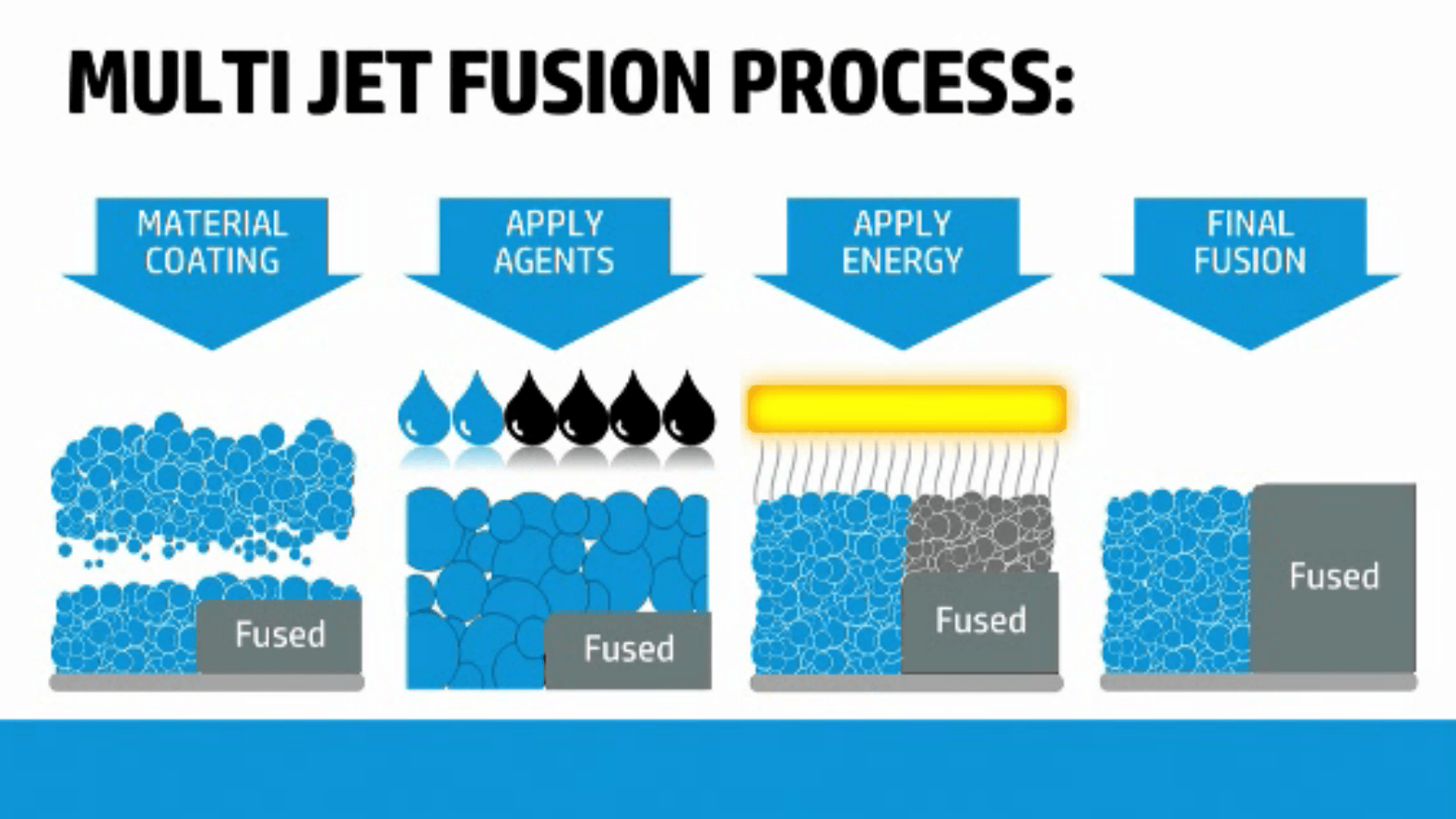
What are MJF 3D Printing’s Advantages and Disadvantages?
MJF (Multi Jet Fusion) is a specific 3D printing technology developed by Hewlett-Packard (HP). It utilizes a powder-based approach and involves fusing material using multiple jets of a binding agent and an energy source. Here are some advantages and disadvantages associated with MJF 3D printing:
Advantages of MJF 3D Printing:
- Speed: MJF is known for its relatively fast printing speed compared to some other 3D printing technologies. It can simultaneously apply multiple jets of binding agent and energy to fuse the powder, allowing for quicker production times.
- High Resolution: MJF is capable of producing parts with high resolution and fine details. The technology allows for precise control over the deposition of the binding agent, resulting in accurate and intricate prints.
- Mechanical Strength: MJF parts are known for their good mechanical properties. The process allows for the creation of robust and durable objects with good structural integrity.
- Increased Productivity: MJF 3D printers typically have a large build volume, which enables the production of multiple parts or larger objects in a single print run. This can enhance productivity and efficiency in manufacturing applications.
Disadvantages of MJF 3D Printing:
- Limited Material Selection: Compared to some other 3D printing technologies, MJF has a more limited range of compatible materials. It is primarily designed for use with specific types of nylon-based powders, which may restrict material options for certain applications.
- Post-Processing Requirements: After the printing process, MJF parts often require post-processing steps to remove excess powder and achieve the desired surface finish. This additional step can increase the overall production time and labor involved.
- Equipment Cost: Acquiring an MJF 3D printer can be relatively expensive, particularly for small businesses or individuals. The cost of the printer and associated consumables may be a deterrent for some users.
- Learning Curve: Like any 3D printing technology, mastering MJF may require a learning curve. Optimizing print settings, understanding material behavior, and achieving consistent results may take some time and experimentation.
It's worth noting that the advantages and disadvantages listed above are specific to MJF 3D printing technology as of my knowledge cutoff in September 2021. It's always recommended to refer to the latest information and advancements in the field for the most accurate and up-to-date assessment.
What is FDM 3D Printing?
FDM is a budget-friendly printing method that has a variety of printer sizes available. It is great for printing when making the first concepts and mid-level prototypes to have a general idea of how your final part will look, feel, and fit with other parts. FDM can also print products for everyday use.
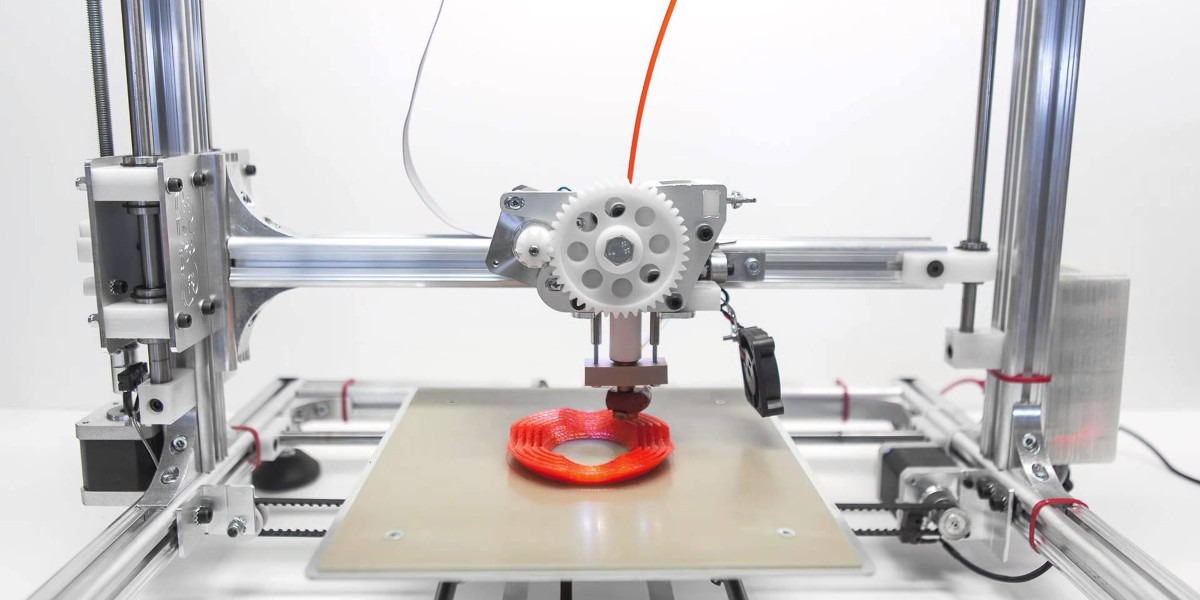
How Does FDM Printing Work?
FDM (Fused Deposition Modeling) 3D printing works by following a series of steps from preparing the digital model to the printing process itself. Here's a detailed explanation of how FDM printing works:
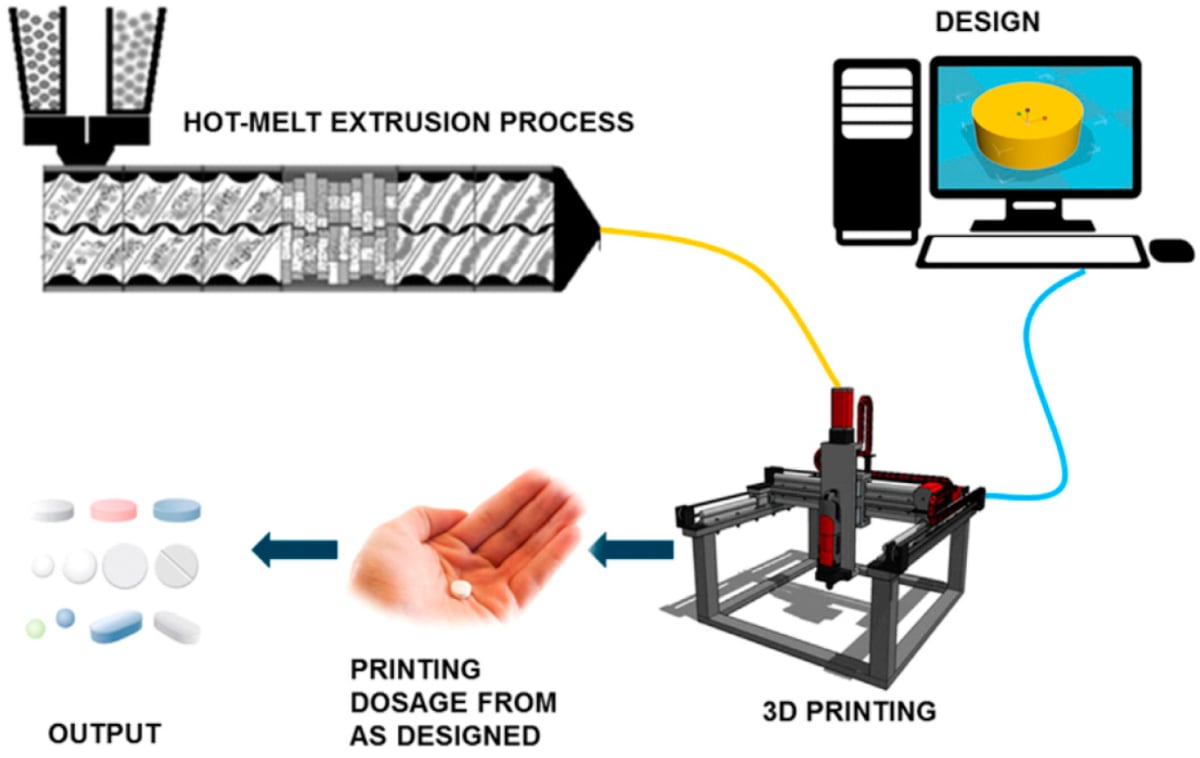
- Design or obtain a 3D model: Begin with a digital 3D model of the object you want to print. This model can be created using computer-aided design (CAD) software or obtained from online repositories. The model represents the shape and structure of the final object.
- Slicing: The 3D model is sliced into thin horizontal layers using specialized slicing software. Each layer is a 2D cross-section of the object. The slicing software generates a set of instructions that the 3D printer understands, including the path the extruder nozzle will follow, the speed of extrusion, and other parameters.
- Set up the 3D printer: Prepare the FDM 3D printer for printing. This involves ensuring the printer is calibrated correctly, loading the filament into the printer, and setting the appropriate temperature for the filament type being used.
- Printing process: Once the printer is ready, the FDM process begins. The filament, typically in the form of a spool, is fed into the printer through a filament feed system. The filament is heated to its melting point and then extruded through a nozzle attached to a movable extruder assembly.
- Layer-by-layer deposition: The extruder nozzle moves along the X, Y, and Z axes according to the instructions from the slicing software. It deposits the melted filament onto the build platform or the previous layer, following the desired path for each layer. The material quickly cools and solidifies upon deposition, forming a solid structure.
- Build platform movement: After each layer is deposited, the build platform moves down (or the extruder assembly moves up) by a precise distance to accommodate the height of the next layer. This step ensures proper layer adhesion and enables the construction of the object in a layer-by-layer manner.
- Cooling and solidification: As each layer is deposited, it cools and solidifies before the next layer is added. This allows the printed object to maintain its shape and structural integrity.
- Completion and removal: Once the printing process is complete, the printed object is left to cool and harden fully. Depending on the design and complexity of the object, it may require additional post-processing steps such as removing support structures, sanding, or smoothing the surface to achieve the desired finish.
FDM 3D printing offers a versatile and accessible method for creating 3D objects by layering melted filament. It is widely used for prototyping, functional parts, and even some end-use applications due to its simplicity, cost-effectiveness, and material variety.
What are FDM 3D Printing’s Advantages and Disadvantages?
FDM (Fused Deposition Modeling) 3D printing has several advantages and disadvantages. Here is an overview of the key benefits and limitations associated with FDM technology:
Advantages of FDM 3D Printing:
- Cost-effective: FDM printers are generally more affordable compared to other 3D printing technologies, making them accessible to a wide range of users including individuals, hobbyists, and small businesses.
- Material variety: FDM supports a wide range of thermoplastic materials, including PLA (Polylactic Acid), ABS (Acrylonitrile Butadiene Styrene), PETG (Polyethylene Terephthalate Glycol), and more. This allows for flexibility in material selection based on the desired properties and applications of the printed object.
- User-friendly: FDM printers are relatively easy to set up and operate, making them suitable for beginners and users with limited technical expertise. The user interface and software are often designed to be intuitive and user-friendly.
- Large printer sizes: FDM printers are available in various sizes, ranging from desktop-sized to industrial-scale machines. This versatility allows for printing objects of different sizes and scales, including prototypes, functional parts, and even full-scale models.
- Support structures: FDM printing allows for the creation of support structures to reinforce overhangs or complex geometries during the printing process. These supports can be easily removed after printing, reducing the need for post-processing and minimizing material waste.
Disadvantages of FDM 3D Printing:
- Lower resolution and visible layer lines: FDM prints may have visible layer lines due to the layer-by-layer deposition process. Achieving highly detailed or smooth surfaces may require additional post-processing steps, such as sanding or applying surface finishes.
- Limited precision and accuracy: FDM printers may have limitations in printing intricate geometries or very small features accurately. The resolution and precision of FDM prints can be influenced by factors like nozzle diameter and printer calibration.
- Post-processing requirements: Depending on the desired finish and quality, FDM prints may require post-processing steps such as removing support structures, sanding, or applying surface finishes. This can add time and effort to the overall printing process.
- Material properties and limitations: While FDM supports a variety of thermoplastic materials, each material has its own characteristics and limitations. Some materials may be prone to warping or have lower heat resistance, which can affect the suitability of FDM prints for certain applications.
- Print speed: FDM printing can be slower compared to other 3D printing technologies, especially for large and complex objects. The layer-by-layer deposition process and the need for cooling between layers contribute to the overall print time.
Despite these limitations, FDM 3D printing remains a widely used and versatile technology, suitable for prototyping, functional parts, and some end-use applications. The advantages of cost-effectiveness, material variety, and user-friendliness make it a popular choice for many users.
Multi Jet Fusion vs. Fused Deposition Modeling
Multi Jet Fusion (MJF) and Fused Deposition Modeling (FDM) are two distinct 3D printing technologies with their own characteristics and applications. Here's a comparison between MJF and FDM:
- Printing Process:
- MJF: Multi Jet Fusion utilizes a powder-based process. A thin layer of powdered material, typically a polymer like nylon, is spread across the build platform. An inkjet array then selectively applies fusing and detailing agents to the powder bed. Finally, an infrared heat source fuses the powdered material in the designated areas, layer by layer, to create the final object.
- FDM: Fused Deposition Modeling works by extruding a thermoplastic filament through a heated nozzle. The filament is melted and deposited layer by layer onto the build platform, following a predetermined path defined by the sliced 3D model.
- Print Speed:
- MJF: Multi Jet Fusion can achieve faster print speeds compared to FDM. The inkjet array used in MJF technology allows for simultaneous fusing of multiple areas within each layer, resulting in quicker overall print times.
- FDM: Fused Deposition Modeling generally has a slower print speed compared to MJF. The layer-by-layer deposition process and the need for cooling between layers contribute to the overall print time.
- Surface Finish and Detail:
- MJF: Multi Jet Fusion can produce parts with smoother surfaces and higher detail compared to FDM. The inkjet array in MJF allows for precise application of fusing and detailing agents, resulting in finer details and a more uniform surface finish.
- FDM: Fused Deposition Modeling can have visible layer lines and may require additional post-processing steps to achieve a smooth surface finish. The resolution and precision of FDM prints can be influenced by factors like nozzle diameter and printer calibration.
- Material Selection:
- MJF: Multi Jet Fusion typically works with powdered materials, primarily polymers like nylon. MJF offers a variety of material options with different properties, such as strength, flexibility, and heat resistance.
- FDM: Fused Deposition Modeling supports a wide range of thermoplastic filaments, including PLA, ABS, PETG, and more. FDM provides flexibility in material selection based on the desired properties and applications of the printed object.
- Cost:
- MJF: Multi Jet Fusion technology tends to be more expensive compared to FDM. The printers and materials used in MJF are often higher in cost.
- FDM: Fused Deposition Modeling is generally more cost-effective compared to MJF. FDM printers are relatively affordable, and filament materials are widely available at varying price points.
Both MJF and FDM have their strengths and are suitable for different applications. MJF is often preferred for high-detail parts with smooth surface finishes and faster production times. FDM, on the other hand, is more accessible, cost-effective, and versatile, making it suitable for a wide range of applications, including prototyping, functional parts, and some end-use products. The choice between the two technologies depends on specific project requirements, desired outcomes, and budget considerations.
3D Printing With V1
offers two types of printing, MJF and FDM, that both provide quick turnaround times and high-quality parts. When deciding which technology to use, you should consider production needs, environmental goals, and the desired part's quality, complexity, material, and properties.
If you are unsure which technology to use, V1's experts can help you select the best option for your project. Additionally, we can improve your design and produce your parts using industrial-grade printers and materials. Contact us today to get started.


